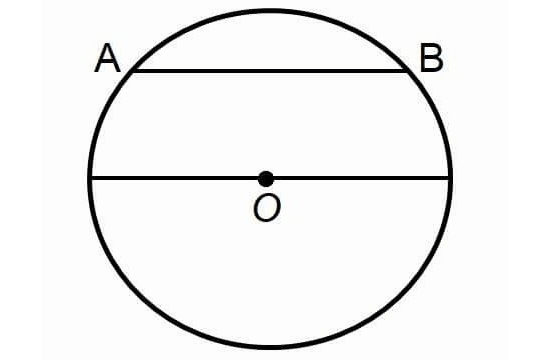WORKSHEET ON TRIANGLE INEQUALITY THEOREM
Problem 1 :
State if the three numbers given below can be the measures of the sides of a triangle.
8, 12 and 9
Problem 2 :
State if the three numbers given below can be the measures of the sides of a triangle.
10, 7 and 13
Problem 3 :
State if the three numbers given below can be the measures of the sides of a triangle.
6, 12 and 3
Problem 4 :
Two sides of a triangle have the measures 6 and 7. Find the range of possible measures for the third side.
Problem 5 :
Find the range of possible measures of x in the following given sides of a triangle :
10, 7, x

Answers
1. Answer :
8, 12 and 9
According to Triangle Inequality Theorem, if the sum of the lengths of any two sides is greater than the third side, then the given sides will form a triangle.
Let us apply the theorem for the given numbers.
8 + 12 > 9
12 + 9 > 8
8 + 9 > 12
Because the given numbers meet the condition said in the theorem, the numbers 8, 12 and 9 can be the measures of the sides of a triangle.
2. Answer :
10, 7 and 13
Use Triangle Inequality Theorem.
10 + 7 > 13
7 + 13 > 10
10 + 13 > 7
Because the given numbers meet the condition said in the theorem, the numbers 10, 7 and 13 can be the measures of the sides of a triangle.
3. Answer :
6, 12 and 3
Use Triangle Inequality Theorem
6 + 12 > 3
12 + 3 > 6
6 + 3 < 12 (Does not satisfy the theorem)
Because the given numbers do not meet the condition said in the theorem, the numbers 6, 12 and 3 can not be the measures of the sides of a triangle.
4. Answer :
Let x be the length of the third side of the triangle.
Sum of the lengths of the given two sides :
6 + 7 = 13
Because the sum of the lengths of the two sides 6 and 7 is 13, the maximum length of the third side must be less than 13.
That is
x < 13 -----(1)
Let us find the minimum value of x.
According to the theorem, we must have
x + 6 > 7
x + 7 > 6
To satisfy both the inequalities above, the value of x must be greater than 1.
That is
x > 1 (or) 1 < x -----(2)
From (1) and (2), the range of "x" is
1 < x < 13
5. Answer :
10, 7, x
Sum of the lengths of the given two sides :
10 + 7 = 17
Because the sum of the lengths of the two sides 10 and 7 is 17, the value of x must be less than 17.
That is
x < 17 -----(2)
Let us find the minimum value of x.
According to the theorem, we must have
x + 10 > 7
x + 7 > 10
To satisfy both the inequalities above, the value of x must be greater than 3.
That is
x > 3 (or) 3 < x -----(2)
From (1) and (2), the range of x is
3 < x < 17
Shortcut :
For better understanding, problem 4 and 5 have been explained in detail.
But there is a shortcut to find the range of possible measures for the third side.
Problem 4 :
Lengths of the given two sides are 6 and 7.
Difference of the lengths = 7 - 6 = 1
Sum of the lengths = 7 + 6 = 13
Hence, the range of possible measures for the third side is
1 < x < 13
Problem 5 :
Lengths of the given two sides are 10 and 7.
Difference of the lengths = 10 - 7 = 3
Sum of the lengths = 10 + 7 = 17
Hence, the range of possible measures for the third side is
3 < x < 17
Kindly mail your feedback to v4formath@gmail.com
We always appreciate your feedback.
©All rights reserved. onlinemath4all.com
Recent Articles
-
Digital SAT Math Problems and Solutions (Part - 193)
Jun 25, 25 01:48 AM
Digital SAT Math Problems and Solutions (Part - 193) -
Digital SAT Math Problems and Solutions (Part - 192)
Jun 24, 25 10:09 AM
Digital SAT Math Problems and Solutions (Part - 192) -
SAT Math : Problems on Exponents and Radicals
Jun 20, 25 08:15 PM
SAT Math : Problems on Exponents and Radicals
